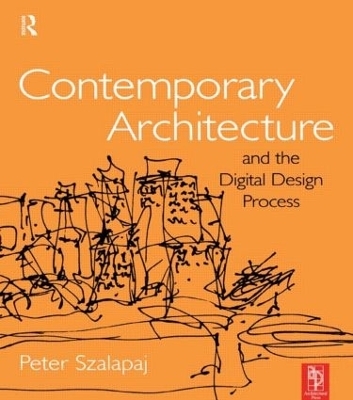
Contemporary Architecture and the Digital Design Process
Architectural Press (Verlag)
978-0-7506-5716-7 (ISBN)
Contemporary Architecture and the Digital Design Process introduces the reader to new developments in the computer modelling of design form in contemporary architectural practice through a series of detailed case studies. The book illustrates how evolving design practices use and exploit the potential of new computing technologies in a wide range of areas and application.
A central thesis of this book is that technology follows design demand, rather than design adjusting to available new technology. Designers are not merely passive recipients of prescribed computing tools and techniques. Instead, they are increasingly able to express their intuitive design ideas through the rational medium of computing.
The book features several contemporary building projects, each of which introduces a range of CAD and computing issues based upon the work of creative architectural and engineering design practices. These include the offices of Frank O. Gehry, Peter Cook and Colin Fournier, Anthony Hunt Associates, Peter Hubner, Szyskowitz-Kowalski, and Faulkner Brown. All these examples show what architects need to know and the skills they need to acquire to use advanced CAD technology.
Peter Szalapaj gained a doctorate in ' Computer Aided Design' from Edinburgh University. He has been lecturing on CAD at Sheffield University since 1992 and is the author of numerous papers and technical reports on the subject. His view of CAD goes against the orthodox ambitions for intelligent or expert systems, and favours the use of computers as a medium which designers can exhibit their own intelligence.
Introduction; The Visualisation of Complex Forms: What you see is what you get: a case study from Syskowitz-Kowalski; Pure Form: Solidifying Mathematics: a case study from Peter Hubner; Parametric Form: Variations on a Theme: a case study from Buro Happold; Express Vision: The Changing Face of Architecture: a case study from Peter Cook and Colin Fournier; Visionary Integration: Blessed Plotting: the Eden Project; The Well-Tempered Vision: Client as Patron, Quality on Demand: a case study from Faulkner Brown Architects; The Exuberant Vision: Throwing off Bowlines: a case study from Frank Gehry; Conclusion; Bibliography; Index.
| Erscheint lt. Verlag | 10.3.2005 |
|---|---|
| Verlagsort | Oxford |
| Sprache | englisch |
| Maße | 189 x 246 mm |
| Gewicht | 635 g |
| Themenwelt | Informatik ► Weitere Themen ► CAD-Programme |
| Technik ► Architektur | |
| ISBN-10 | 0-7506-5716-2 / 0750657162 |
| ISBN-13 | 978-0-7506-5716-7 / 9780750657167 |
| Zustand | Neuware |
| Haben Sie eine Frage zum Produkt? |
aus dem Bereich


